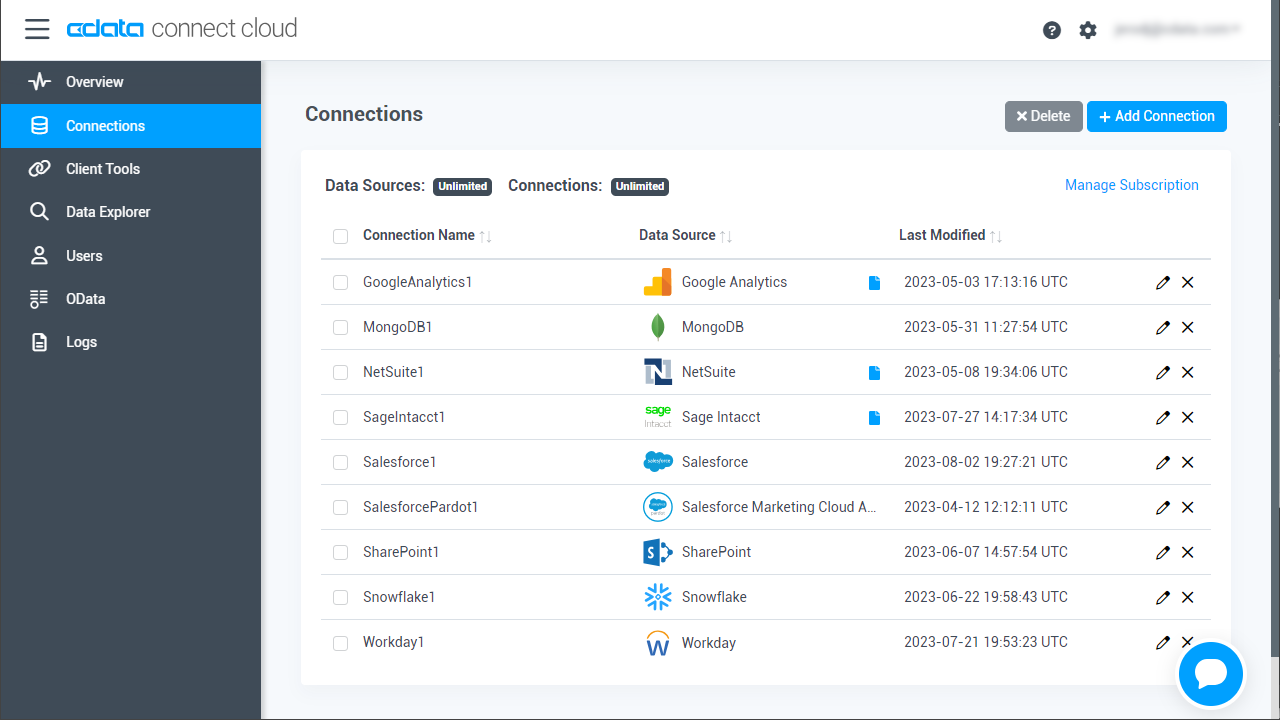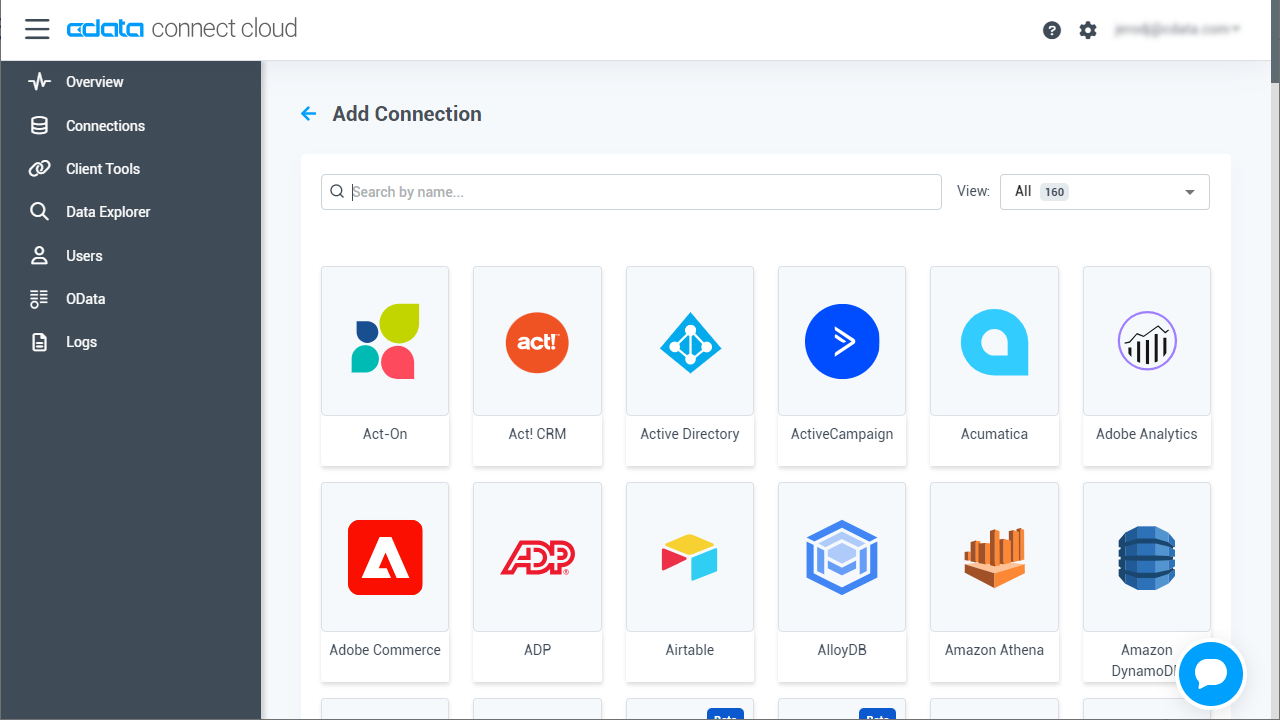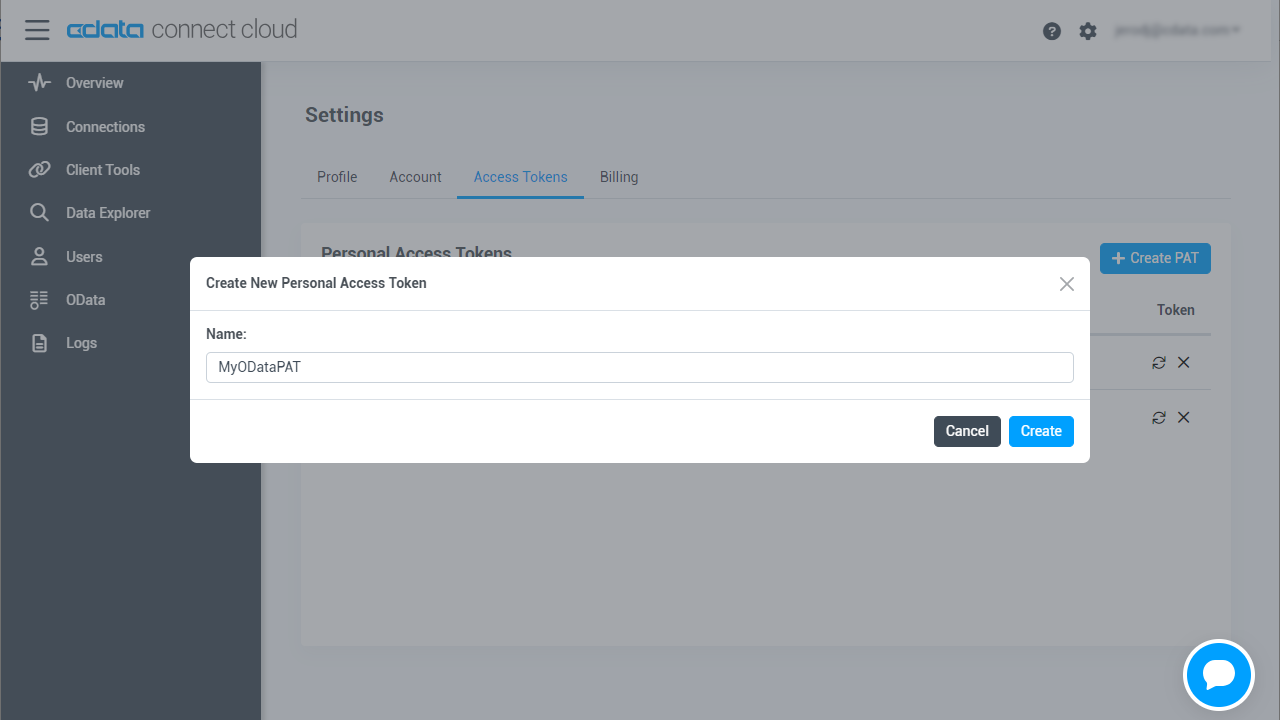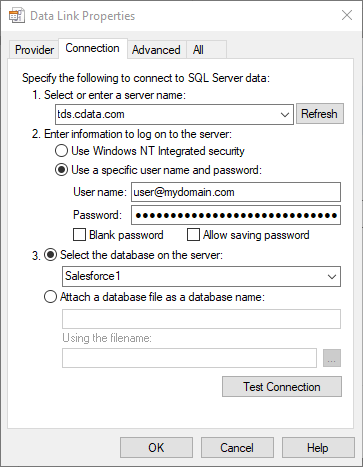Discover how a bimodal integration strategy can address the major data management challenges facing your organization today.
Get the Report →Integrate Smartsheet Data into Power Automate Desktop using CData Connect
CData Connect for Smartsheet Data enables you to integrate Smartsheet data into workflows built using Microsoft Power Automate Desktop.
CData Connect enables you to access live Smartsheet data in workflow automation tools like Power Automate. This article shows how to integrate Smartsheet data into a simple workflow, saving Smartsheet data into a CSV file.
CData Connect provides a live interface for Smartsheet, allowing you to integrate with live Smartsheet data in Power Automate — without replicating the data. Connect uses optimized data processing out of the box to push all supported SQL operations (filters, JOINs, etc) directly to Smartsheet, leveraging server-side processing to quickly return Smartsheet data.
About Smartsheet Data Integration
CData provides the easiest way to access and integrate live data from Smartsheet. Customers use CData connectivity to:
- Read and write attachments, columns, comments and discussions.
- View the data in individuals cells, report on cell history, and more.
- Perform Smartsheet-specific actions like deleting or downloading attachments, creating, copying, deleting, or moving sheets, and moving or copying rows to another sheet.
Users frequently integrate Smartsheet with analytics tools such as Tableau, Crystal Reports, and Excel. Others leverage our tools to replicate Smartsheet data to databases or data warehouses.
Getting Started
Configure Smartsheet Connectivity for Power Automate
Connectivity to Smartsheet from Power Automate is made possible through CData Connect Cloud. To work with Smartsheet data from Power Automate, we start by creating and configuring a Smartsheet connection.
- Log into Connect Cloud, click Connections and click Add Connection
![Adding a Connection]()
- Select "Smartsheet" from the Add Connection panel
![Selecting a data source]()
-
Enter the necessary authentication properties to connect to Smartsheet.
Smartsheet uses the OAuth authentication standard. To authenticate using OAuth, you will need to register an app to obtain the OAuthClientId, OAuthClientSecret, and CallbackURL connection properties.
However, for testing purposes you can instead use the Personal Access Token you get when you create an application; set this to the OAuthAccessToken connection property.
![Configuring a connection (Salesforce is shown)]()
- Click Create & Test
- Navigate to the Permissions tab in the Add Smartsheet Connection page and update the User-based permissions.
![Updating permissions]()
Add a Personal Access Token
If you are connecting from a service, application, platform, or framework that does not support OAuth authentication, you can create a Personal Access Token (PAT) to use for authentication. Best practices would dictate that you create a separate PAT for each service, to maintain granularity of access.
- Click on your username at the top right of the Connect Cloud app and click User Profile.
- On the User Profile page, scroll down to the Personal Access Tokens section and click Create PAT.
- Give your PAT a name and click Create.
![Creating a new PAT]()
- The personal access token is only visible at creation, so be sure to copy it and store it securely for future use.
With the connection configured, you are ready to connect to Smartsheet data from Power Automate Desktop.
Integrate Smartsheet Data into Power Automate Workflows
After configuring CData Connect with Smartsheet, you are ready to integrate Smartsheet data into your Power Automate workflows. Open Microsoft Power Automate, add a new flow, and name the flow.
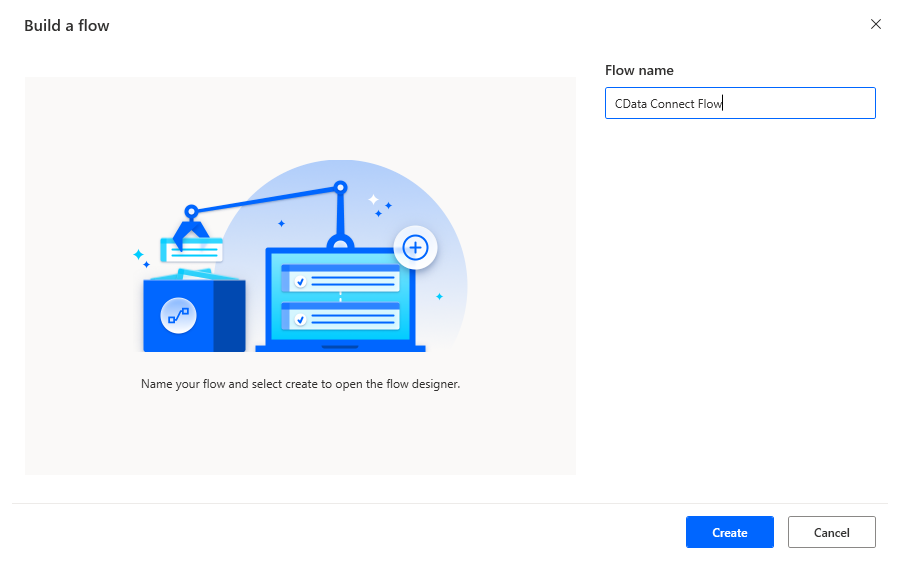
In the flow editor, you can add the options to connect to Smartsheet, query Smartsheet using SQL, and write the query results to a CSV document.
Add an Open SQL Connection Action
Add an "Open SQL connection" action (Action -> Database) and click the option to build the Connection string. In the Data Link Properties wizard:
- On the Provider tab: select Microsoft OLE DB Driver for SQL Server
- On the Connection tab:
- Select or enter a server name: set to tds.cdata.com,14333
- Enter information to lag onto the server: select "Use a specific username and password"
- Set User name to your CData Connect Cloud user name (e.g. [email protected])
- Set Password to your PAT
- Select the database: use the database configured above (e.g. Smartsheet1)
- Click "Test Connection" to ensure the connection is configured properly
- Click "OK"
![A configured connection to CData Connect]()
After building the connection string in the Data Link Properties wizard, save the action.
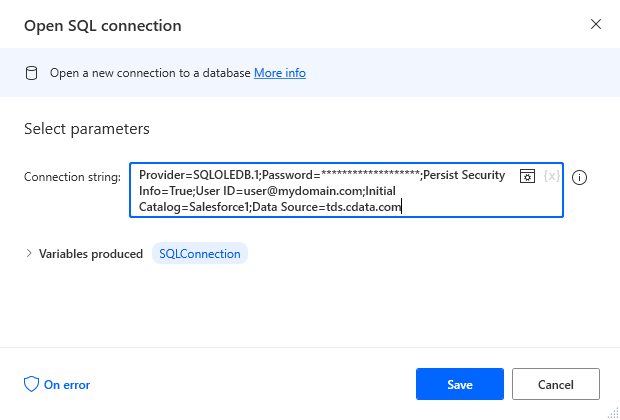
Add an Execute SQL Statement Action
Add an "Execute SQL statement" action (Action -> Database) and configure the properties.
- Get connection by: SQL connection variable
- SQL connection: %SQLConnection% (the variable from the "Open SQL connection" action above)
- SQL statement: SELECT * FROM Sheet_Event_Plan_Budget
After configuring the properties, save the action.
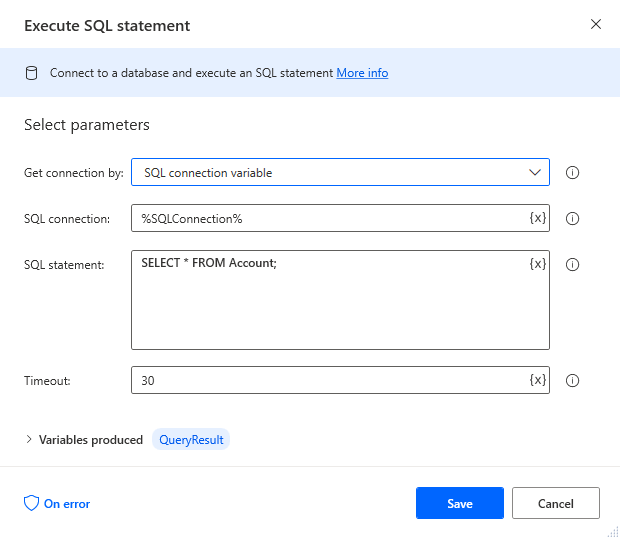
Add a Write to CSV File Action
Add a "Write to CSV file" action (Action -> File) and configure the properties.
- Variable to write to: %QueryResult% (the variable from the "Execute SQL statement" action above)
- File path: set to a file on disk
- Configure Advanced settings as needed.
After configuring the properties, save the action.
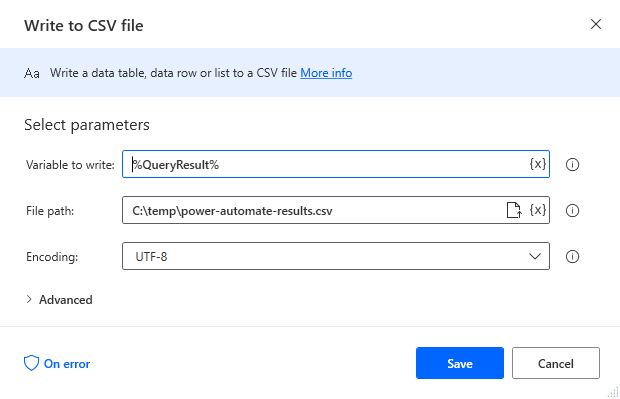
Add a Close SQL Connection Action
Add a "Close SQL connection" action (Action -> Database) and configure the properties.
- SQL Connection: %SQLConnection% (the variable from the "Open SQL connection" action above)
After configuring the properties, save the action.
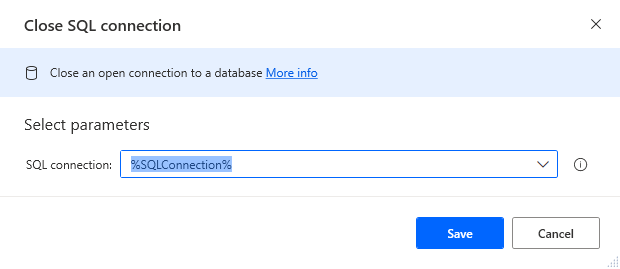
Save & Run the Flow
Once you have configured all the options for the flow, click the disk icon to save the flow. Click the play icon to run the flow.
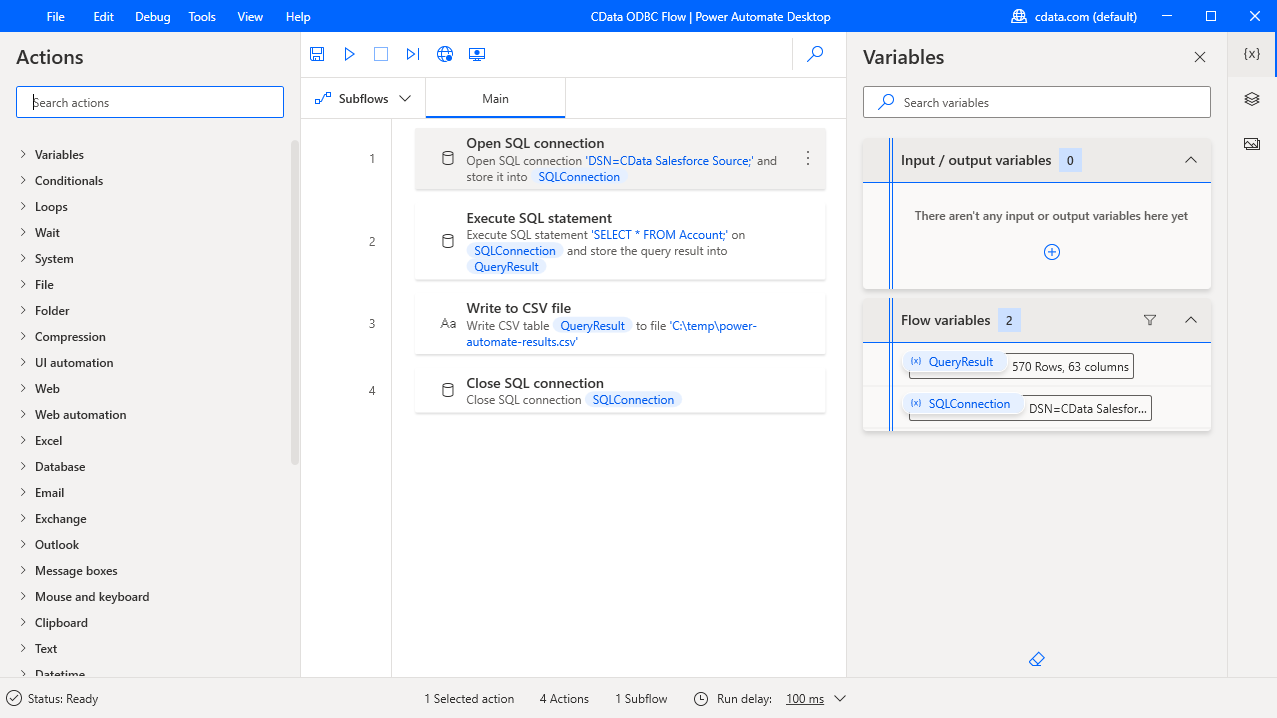
Now you have a workflow to save Smartsheet data into a CSV file.
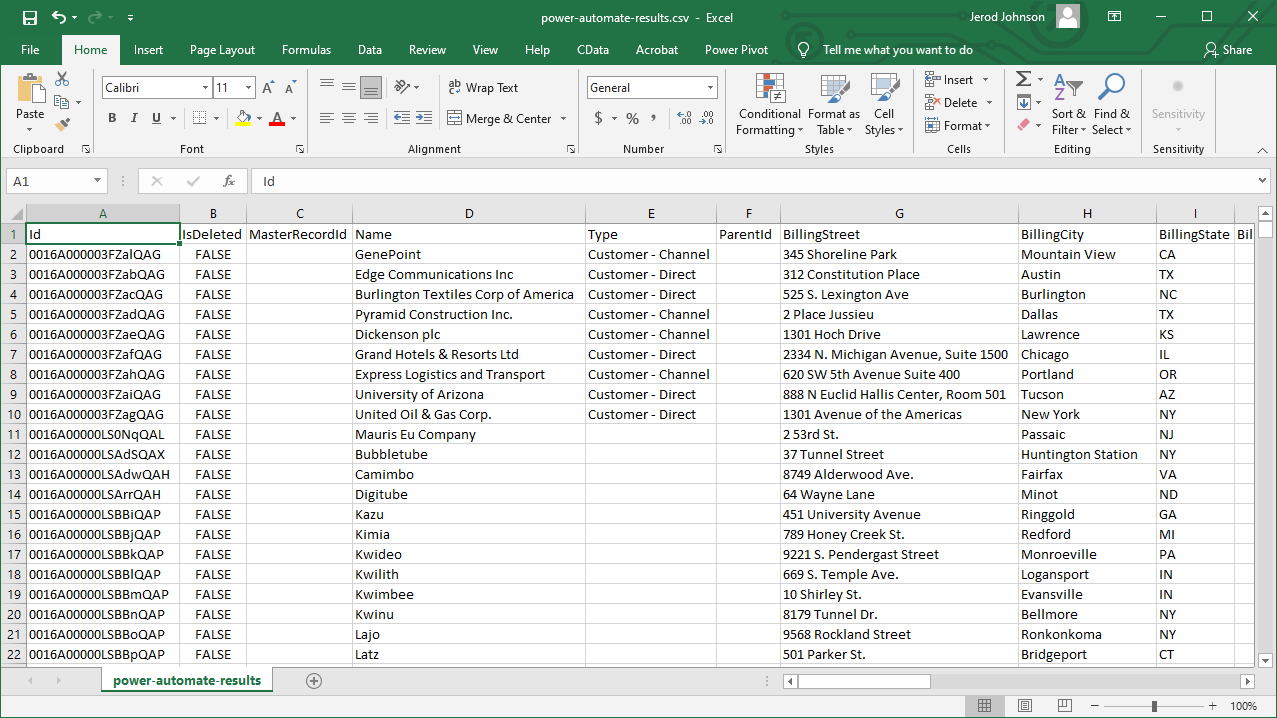
With CData Connect Cloud, you get live connectivity to Smartsheet data within your Microsoft Power Automate workflows.
SQL Access to Smartsheet Data from Cloud Applications
Now you have a direct connection to live Smartsheet data from Power Automate tasks. You can create more connections and workflows to drive business — all without replicating Smartsheet data.
To get SQL data access to 100+ SaaS, Big Data, and NoSQL sources directly from your cloud applications, sign up for a free trial of CData Connect Cloud.
Related Power Automate Articles
This article walks through using CData Connect Cloud with Power Automate Desktop. Check out our other articles for more ways to work with Power Automate (Desktop & Online):





